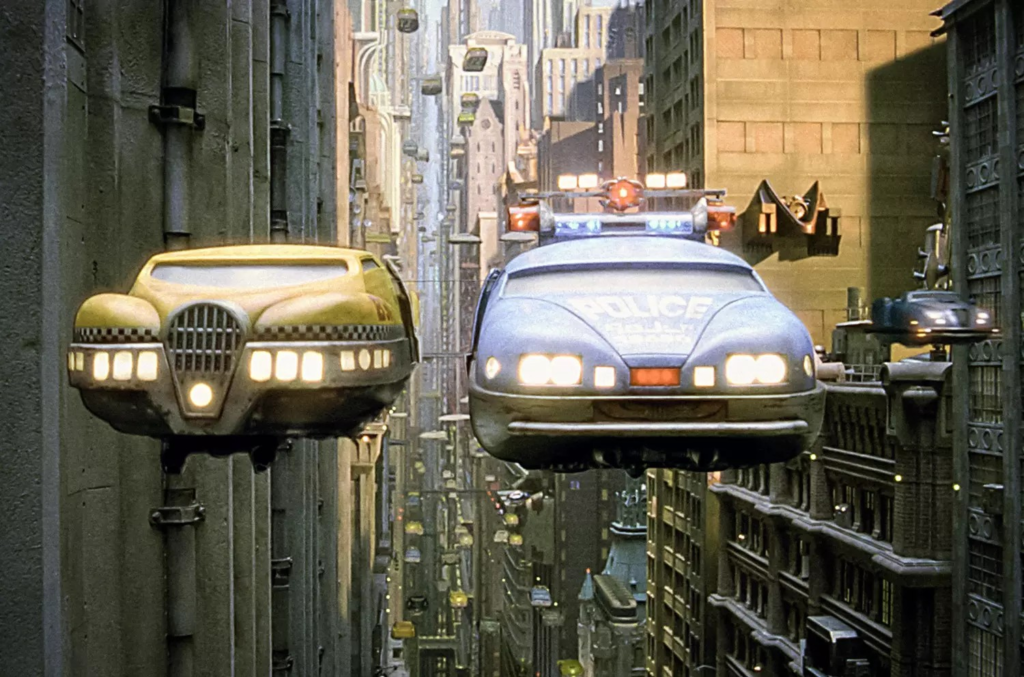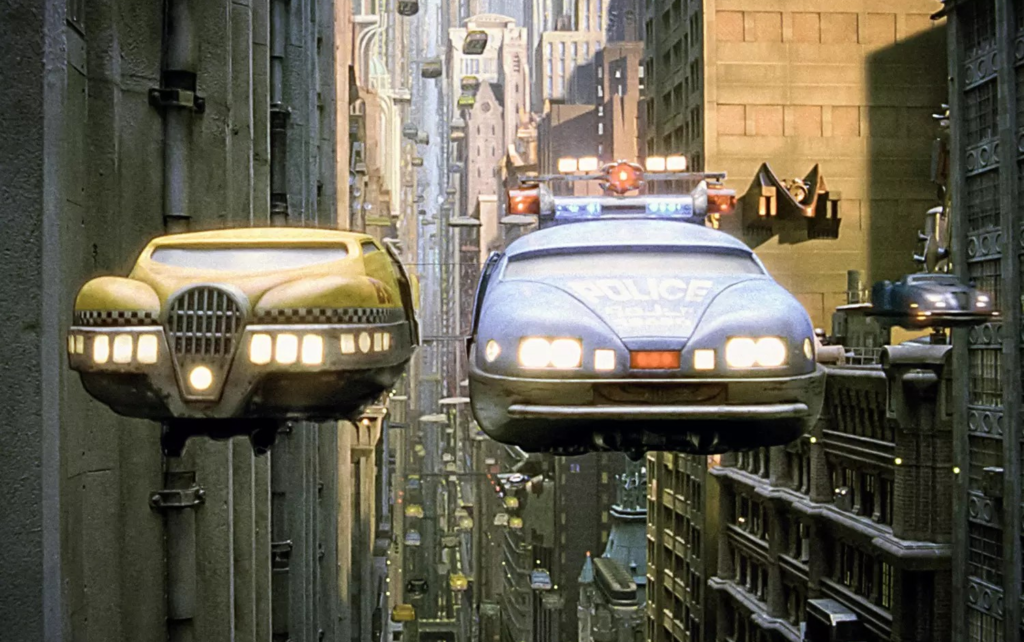Flying cars, reality or myth
When we think of flying cars, our minds often wander to the realms of science fiction, where futuristic cities and advanced technologies intermingle. One notable film that has captured the imagination of many when it comes to flying cars is “The Fifth Element.” While the film’s vision of the future may seem like pure fantasy, it raises intriguing questions: Could flying cars become a reality? What technologies could be applied to make them a part of our everyday lives?

In “The Fifth Element,” the bustling metropolis of New York City in the 23rd century features an array of flying vehicles that navigate the sky with ease. These flying cars are compact, sleek, and highly maneuverable, making for an efficient and congestion-free mode of transportation. The question is whether such a future could ever materialize.
The Current State of Flying Cars:
While we may not yet have fully realized the futuristic vision presented in “The Fifth Element,” the concept of flying cars is slowly progressing from the realm of science fiction to a tangible possibility. Several companies and research organizations are actively developing flying car prototypes that aim to address the technical and regulatory challenges.
Technologies Driving the Transition:
Electric Propulsion: To enable the vertical takeoff and landing (VTOL) capabilities seen in the film, electric propulsion systems are crucial. Electric motors offer the advantage of being quieter, more efficient, and environmentally friendly. Advanced battery technologies, like lithium-sulfur batteries, are being explored to provide the necessary power-to-weight ratios for flying cars.
Autonomous Systems: Autonomous flight systems are essential to ensure safe and reliable operation. These systems include advanced sensors, artificial intelligence, and machine learning algorithms to navigate the skies, detect obstacles, and make split-second decisions. Companies like Waymo and Uber are investing in autonomous flying vehicle technology.
Lightweight Materials: To achieve the desired agility and energy efficiency, lightweight materials are a must. Composite materials, carbon fiber, and advanced alloys are being used to build the frames and bodies of flying cars while ensuring structural integrity and safety.
Traffic Management: To avoid the chaotic skies seen in the movie, robust air traffic management systems will be needed. This includes air traffic control for low-altitude airspace, vehicle-to-vehicle communication, and even blockchain technology to manage traffic efficiently.
Infrastructure Development: Flying cars will require dedicated takeoff and landing sites, known as “vertiports.” Building these infrastructures in urban environments and integrating them into existing transportation networks will be a significant challenge.
Regulatory Framework: Perhaps one of the most significant hurdles is the development of comprehensive regulations that ensure the safety of flying car operations. Regulatory bodies, such as the Federal Aviation Administration (FAA), are working to adapt existing rules and standards for this new mode of transportation.

Challenges and Considerations:
While the vision of flying cars is tantalizing, several challenges must be addressed. Safety, noise pollution, urban planning, and public acceptance are among the critical considerations. Transitioning from a world of ground-based vehicles to airborne mobility will require a significant shift in both technology and societal mindset.
The Road Ahead:
Looking forward, the development of flying cars is on the horizon. Several companies have already conducted successful test flights, and experts predict that the first commercial flying cars could be available within the next decade. However, mass adoption may take longer as various technological, regulatory, and infrastructural challenges must be overcome.
Control in the Sky:
Implementing control measures in the sky is essential to ensure the safe operation of flying cars. This would include traffic management systems, navigation aids, and safety protocols. Here are some concepts to consider:
Air Traffic Control (ATC): Similar to traditional aircraft, flying cars may require a form of air traffic control to manage takeoffs, landings, and routes through the sky. Advanced AI systems would be employed to coordinate the movements of these vehicles.
Smart Sky Infrastructure: The creation of a “smart sky” would involve sensors, communication networks, and navigation aids to ensure safe, efficient, and collision-free operation of flying cars.
Airborne Communications: Flying cars would need to communicate with each other and ground-based systems to provide real-time information on routes, weather conditions, and other traffic. Advanced data exchange protocols would be essential.
Urban Planning: Cities would need to adapt to accommodate flying vehicles. This could involve the creation of vertiports, designated landing and takeoff zones, and sky lanes to manage traffic flow.
Landing Assistance: Advanced landing systems, such as automated landing pads and precision navigation tools, would be crucial for safe and convenient landings in densely populated areas.

In conclusion, while the flying cars depicted in “The Fifth Element” remain a futuristic ideal, substantial progress is being made in developing the technologies that could one day make them a reality. The journey to integrate flying cars into our daily lives is undoubtedly complex, but it’s a journey filled with innovation, exploration, and the promise of a future where the skies are open for everyone. With continued advancements in technology, infrastructure, and regulation, the dream of flying cars may become a practical mode of transportation in the not-so-distant future.
Notable Flying Car Prototypes: Paving the Way to the Future of Transportation
The dream of flying cars has captivated the collective imagination for decades, and while we may not be soaring through the skies in personal vehicles just yet, several promising prototypes are inching closer to making that vision a reality. Here, we delve into a few of these notable prototypes and their key details:
1. AeroMobil 4.0:
- Manufacturer: AeroMobil
- Key Features: The AeroMobil 4.0 is designed as a roadable aircraft, meaning it’s both a car and an airplane. It features foldable wings and a compact design, allowing it to fit into a standard parking space. It’s powered by a combustion engine and can fly at speeds of up to 160 km/h (99 mph) in the air and drive on the road like a car.
2. Terrafugia Transition:
- Manufacturer: Terrafugia (a subsidiary of Geely, the parent company of Volvo)
- Key Features: The Terrafugia Transition is another roadable aircraft with foldable wings. It’s designed for private pilots who want to drive their aircraft to the airport. It runs on regular gasoline, has a cruising speed of 100 mph in the air, and can cover approximately 400 miles on a single tank.
3. PAL-V Liberty:
- Manufacturer: PAL-V
- Key Features: The PAL-V Liberty is a gyrocopter-style flying car that’s also road legal. It’s equipped with two engines, one for driving and one for flying, and features a patented unfolding rotor. It can reach air speeds of up to 112 mph and has a range of around 310 miles in the air. On the road, it can reach speeds of up to 100 mph.
4. Vertical Aerospace VA-X4:
- Manufacturer: Vertical Aerospace
- Key Features: The Vertical Aerospace VA-X4 is an electric vertical takeoff and landing (eVTOL) aircraft designed for urban air mobility. It’s fully electric and can carry up to four passengers. With a top speed of 150 mph and a range of around 100 miles, it’s poised to serve as an air taxi for urban transportation.
5. EHang 216:
- Manufacturer: EHang
- Key Features: The EHang 216 is an autonomous electric aerial vehicle designed for urban air mobility. It’s capable of carrying two passengers and has a top speed of 80 mph. EHang envisions it as a short- to medium-distance mode of transportation for passengers in urban areas.
6. Joby Aviation:
- Manufacturer: Joby Aviation
- Key Features: Joby Aviation is developing an eVTOL aircraft designed for air taxi services. It can carry up to five passengers and a pilot and has a top speed of 200 mph. The aircraft is fully electric, and Joby is working toward making it part of an urban air transportation network.
These prototypes offer a glimpse into the exciting future of personal air travel and urban mobility. While they are not yet widely available for consumer use, they represent significant progress toward the development of flying cars and urban air mobility solutions. As technology continues to advance and regulatory frameworks evolve, we may soon see these prototypes become a common sight in our cities and skies.


